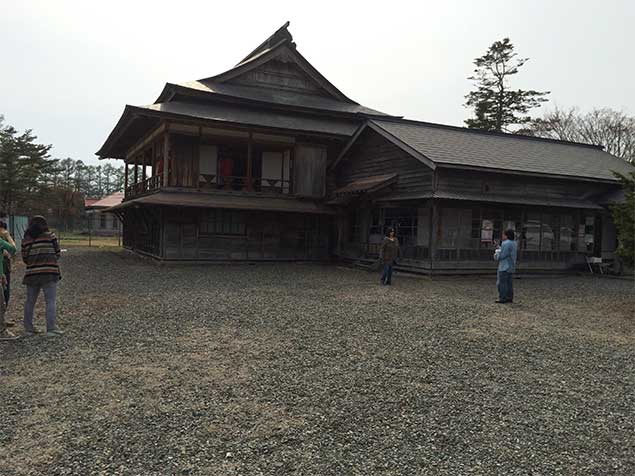In Shin-Hidaka Town, there is a famous cherry blossom avenue known as “Nijukken Road Sakura Namiki,” where over 2,000 cherry trees bloom gloriously along a straight 7 km stretch.
Originally established during the Meiji era as a route for imperial family members inspecting the Imperial Ministry’s ranch, it took three years starting in 1916 (Taisho 5) to transplant Ezoyamazakura and other cherry trees from nearby mountains. The road gained its name “Nijukken Road” because it precisely spanned twenty ken (approximately 36 meters) in width on both sides.
Today, it is beloved by many as one of Japan’s foremost cherry blossom viewing spots, selected as part of “Japan’s Top 100 Roads,” “100 Famous Cherry Blossom Viewing Spots,” and designated a “Hokkaido Heritage.”
History
Nestled further down this tree-lined avenue stands Ryu-unkaku, an impressive building easily visible from afar. Its prominent presence in the middle of this ranch landscape raises curiosity as to why such a splendid structure exists here with no other buildings nearby. Exploring the history of those who utilized this building offers insights into a significant chapter of Hokkaido’s history.
Constructed in 1909 (Meiji 42), Ryu-unkaku originally served as a guesthouse where imperial family members and dignitaries visited. Featuring an elegant palace-style exterior, its interior houses treasures such as the last writings of Hirobumi Ito, paintings by Tan’yū Kano, furniture, tableware, and equestrian equipment used by the imperial family. This two-story wooden structure is typically not open to the public, except during the cherry blossom festival period when visitors can tour its interior.
Access
If you visit during the cherry blossom festival along Nijukken Road Sakura Namiki, be sure to explore Ryu-unkaku. Surrounded by ranchland, it offers serene and picturesque views in a tranquil setting.


Admission to view the inside of the building is free, but donations for its restoration are greatly appreciated. The building is in need of restoration due to significant damage.

There are several exhibitions featuring paintings, calligraphy (Sho), and various artifacts. Among them are two Byobu (folding screens) painted by Kano Tanyu, a renowned Japanese artist from the early Edo era and a prominent figure in the Kano School of painting.

These paintings are in very poor condition and are in need of restoration, I believe.

There are few buildings around here, but during the Taisho and early Showa eras, many stables were constructed for breeding warhorses.
Related article
Nijyukkendoro Sakura Namiki(Cherry-blossoms road): Cherry Blossoms in Shizunai, Hokkaido

